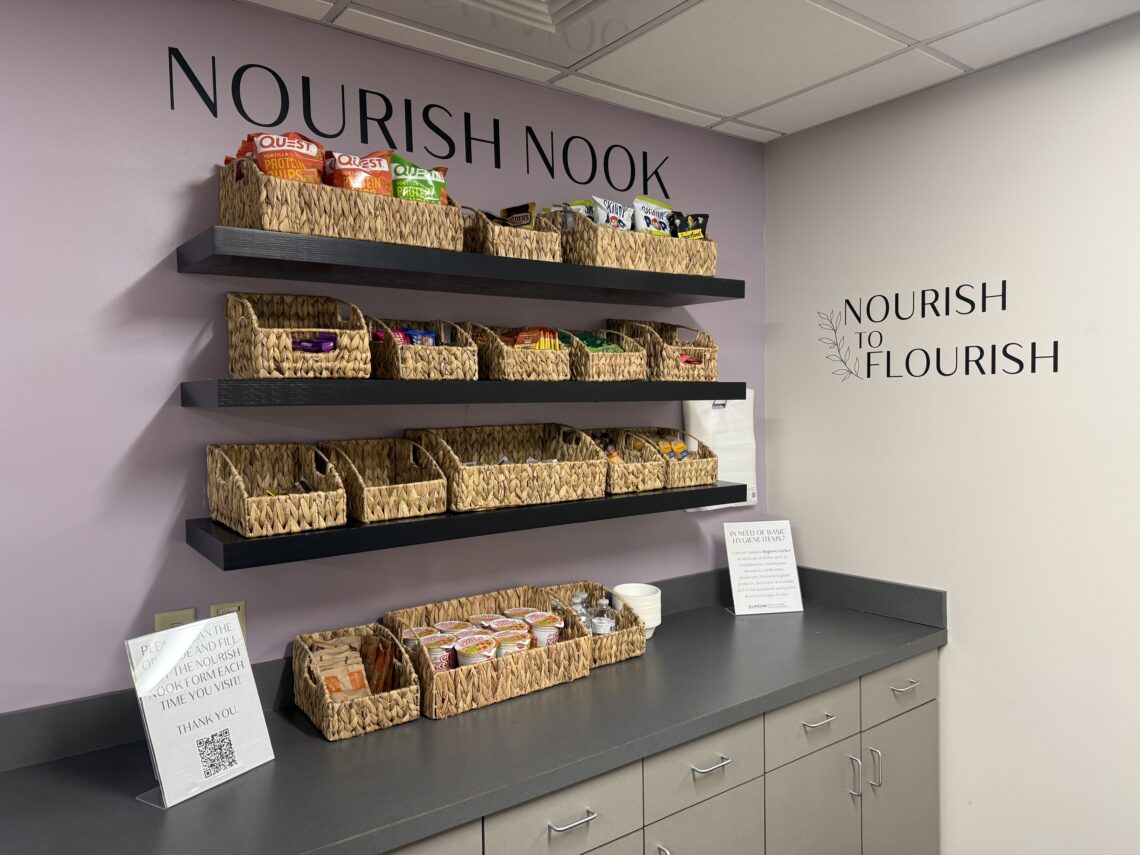
Lipscomb expands support as student food insecurity rises
As federal SNAP benefits remain limited, the conversation about food insecurity is growing. Dr. Autumn Marshall, chair of Lipscomb’s Department of Nutrition and a registered dietitian, said people underestimate how common food insecurity is on college campuses.
“I was really surprised when I did some digging on this, that about 19% of college students experience some level of food insecurity,” Marshall said. “Typically, the ones who live on campus, that’s not a problem because they’re required to have a meal plan. But students who move off campus to save money or who are living at home may be experiencing food insecurity, especially if they’re not able to work as much because they’re in school.”
This year, Lipscomb created the Nourish Nook, a small food resource space located in the Office of Student Success and Well-Being. It provides microwavable meals and snacks for students who don’t have easy access to food options. Students can take up to five items every two weeks, after completing a check-in form.
“When you’re hungry, you can’t concentrate in class,” Marshall said. “And, you know, we’ve seen this in little kids. That was the whole reason for the creation of school lunch and school breakfast programs was to make sure that kids weren’t sitting in class, not able to pay attention because they’re so hungry. So this just kind of brings it up to the college level.”
Marshall said the rising cost of groceries and limited time to work while in school creates barriers for many students who live off campus. Some juggle multiple jobs, and that reduces the time they have to study.
“I’m sure that we do have students whose families have been on SNAP benefits,” she said. “They may be here on scholarship, but that means there’s no money left over for food. So that is complicated by the government shutdown and the limit to payments.”
Marshall explained that SNAP benefits are based on the federal Thrifty Food Plan, which sets the lowest-cost model for feeding a household.
“The thrifty food plan is supposed to be based on the Consumer Price Index, and it’s designed to provide adequate food for the least amount of money possible. So if you look at the Thrifty Food Plan, it will tell you this is the amount of money we’re going to give per week for a family of four. And then it will define the family of four as two adults and two children under the age of 18.”
Lipscomb also participates in Swipe Out Hunger, a program run through Sodexo where students can donate unused meal swipes to peers who may not have enough meals. “It provides for students who can’t afford the biggest meal plan,” Marshall said. “Sodexo manages all of that and helps students who are in need get some extra meals.”
Marshall said she sees a rising need both in Nashville and nationally. She volunteers regularly with Room in the Inn, where shelters and food pantries have been strained by increased demand.
“If you are a college student experiencing food insecurity, please explore the options that are available through Student Life,” she said. “Education is key, and I don’t think a lot of people get the nutrition education they need.”






